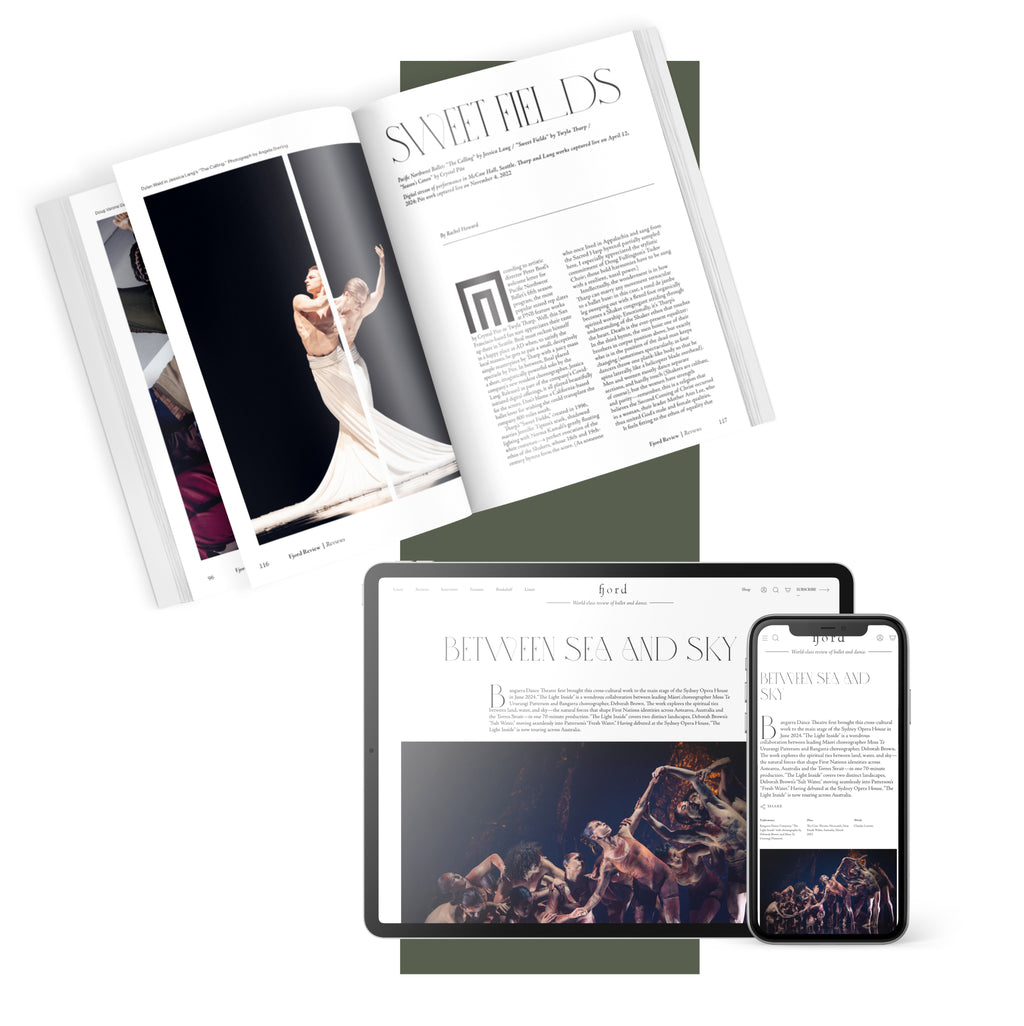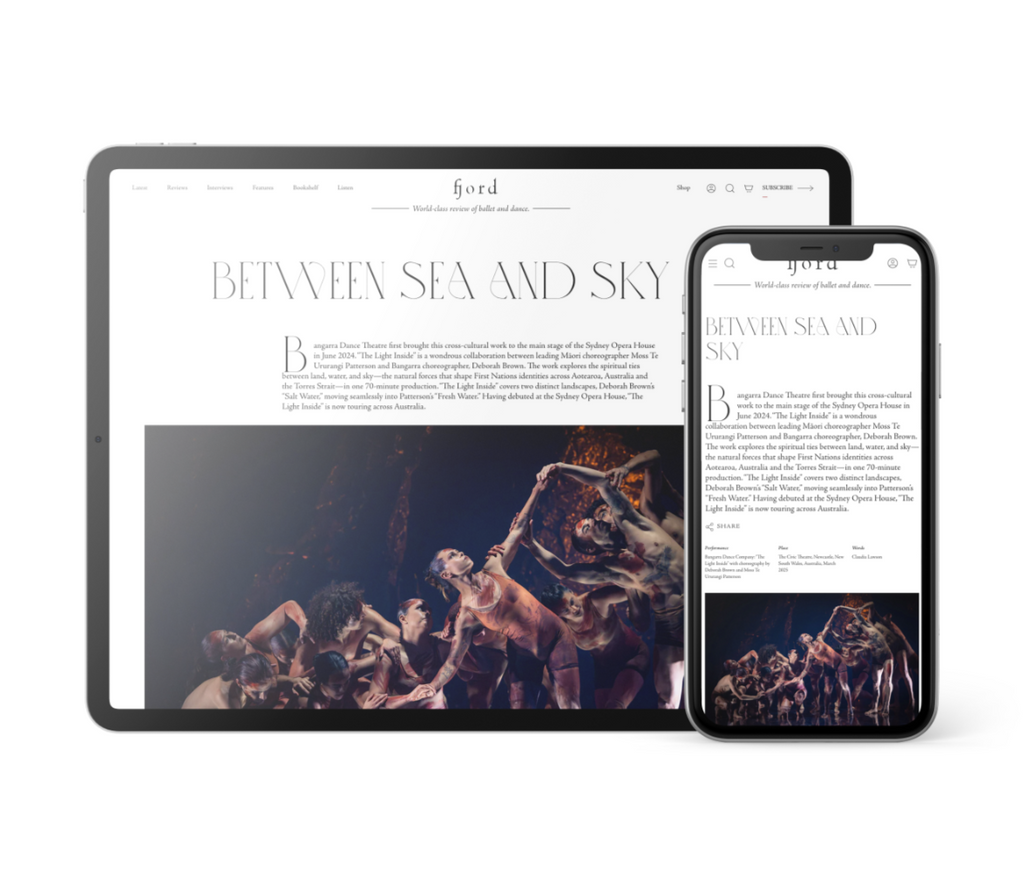In “Candleflowerdance,” set to Stravinsky’s Serenade in A—an almost Viennese-sounding work—this obsession with structure threatens to overwhelm the piece, as sometimes happens with Morris. Six dancers take turns occupying an illuminated square at the center of the stge. Their movements illustrate counterpoint, call and response, canon. Two women cover their faces, jump, hold out claw hands; dancers stand in poses, fall, run off; dancers emerge from the ensemble, show a phrase or two. You can see the ideas ricocheting in Morris’s head, but it’s a bit like watching a chess match.
“Pacific,” instead, invites the viewer in, with its expansive movement vocabulary—big arms, wide squats, sweeping turns. This expansiveness turns the dancers into statuesque, archaic-looking figures, like caryatids; they open their arms to take in the whole world. (The piece was originally made for ballet dancers, at San Francisco Ballet, which partly explains its lyricism.) Lou Harrison’s Trio for Violin, Cello, and Piano has gamelan-like qualities, and the dancers’ movements, which fall right in the center of each beat, become an illustration of the sound of bells. Certain elements—an arm position out of classical sculpture, two hands held together in front of the chest— return again and again, combined in different ways, passed from dancer to dancer like gifts. An irregular rhythmic pattern is very clearly reflected in a series of small jumps (jetés) 1-2-3 that both help to hear the music and give the piece a wonderful lilt.
It’s exhilarating to see movement and sound come together in this way. Mark Morris has made grander, more sophisticated, more complex works than these. But it is in these chamber pieces that we can really see the building blocks of his style. Plainly, without fuss, they show why his dances continue to be so uniquely compelling.











comments